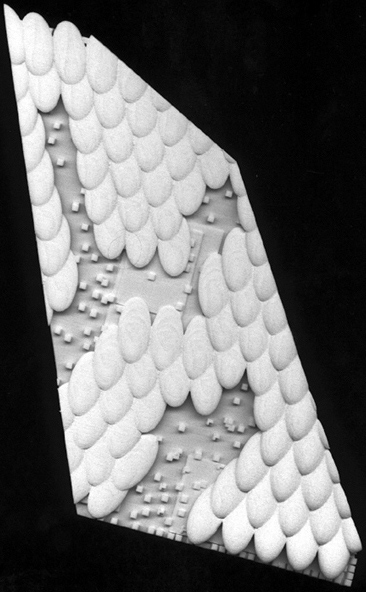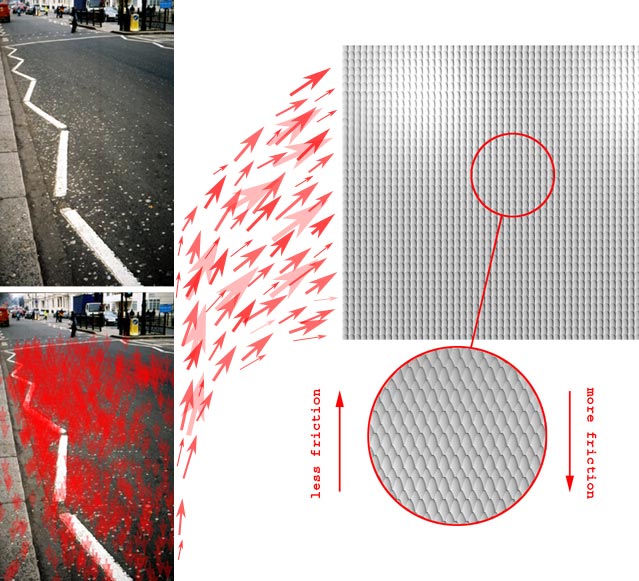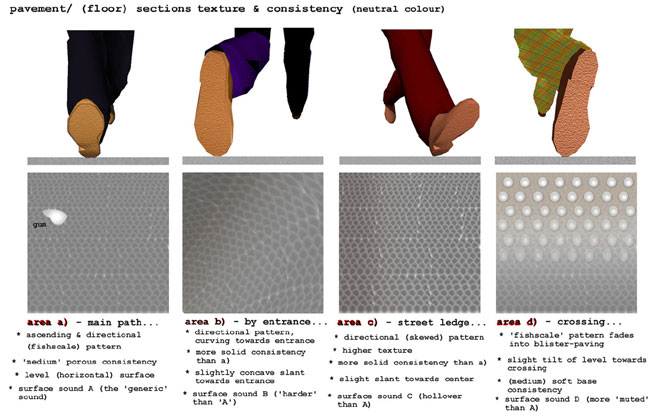
Design Ground by thomas modeen from uk
designer's own words:
The Design Ground project is an attempt to manipulate the sensory qualities and properties of a surface to reflect and amplify particular features of the surfaces various locales. This is achieved by changing the surfaces haptic traits and consistency according to a pre-determined taxonomy (partly inspired by braille) that allows one to modify its appearance, along with its textural and auditory qualities.
Initially inspired by the patterns formed by discarded chewing-gums on the pavement of a busy city-street, the surface of the Design Ground takes the form of a (fish) scale-like pattern, which immediately provides one with a binary, directional, pattern (more rough in one direction than the other), which then can be 'enriched' by making the scale-pattern larger or smaller, longer or shorter, more or less pronounced, more or less skewed, etc. - according to some pre-determined 'tactile-icons' that allow one to insinuate things about the surrounding of the surface. I.e. one can make it gradually 'rougher' towards the edges of the side-walk or pathway; shift the direction of the scales according to desired pedestrian paths, or even indicate the location of fire-escapes by making the direction of the scales always 'point' towards the nearest exits, something which could be perceived even without vision (one could 'feel' ones way to the nearest fire-exit...).
In execution the Design Ground project has also been very influenced and dependent on the particulars and semiotics of Rapid Manufacturing which would allow one to fabricate an almost infinite number of self-similar, but still always slightly different, tiles. No two adjacent tiles would need to be the same. Here the aforementioned taxonomy would be set within a CAD file, from which a segment of the surface could be directly fabricated, without the need to produce a mold, or involve any more manual manipulations.
A disected Selective Laser Sintering model of the Design Ground Surface
 The taxonomy for the final (fish) scale-like patterns of the design were initially inspired by the patterns formed by discarded chewing gums
The taxonomy for the final (fish) scale-like patterns of the design were initially inspired by the patterns formed by discarded chewing gums
 Such aforementioned patterns have been organized to affect and amplify the particulars of a each of the surfaces particular segments
Such aforementioned patterns have been organized to affect and amplify the particulars of a each of the surfaces particular segments